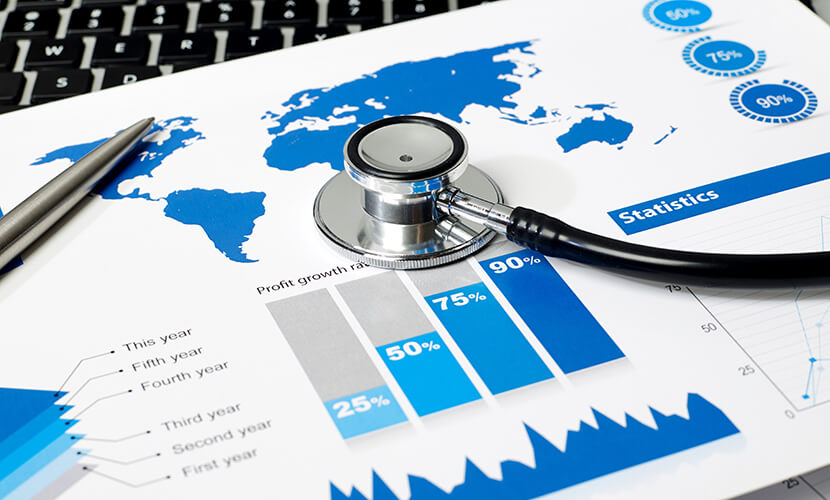Insight Paper January 26, 2016
How GIS Applies to Healthcare
GIS can increase our understanding of patient health across the country
In my previous Geographic Information System (GIS) Insight Paper, A Brief Intro to GIS, I discussed the benefits of incorporating GIS into your organization’s analytic strategy. In this article, I will look at how GIS principles can be applied to healthcare.
Healthcare has strong geographical ties. There are endless determinants that affect the health of an individual, including physical, social, economic, and cultural considerations. While every individual will have a unique compilation of these factors that will contribute to their health, looking at determinants at the population level allows for more cost-efficient and widespread influence. More often than not, a population within a defined geography will have similar characteristics relating to variables that affect health. For example, the Southeastern region of the United States has some of the worst health outcomes in the country. While this can be attributed to a variety of factors including funding, provider supply, facilities, and demographics, one cannot discount what is likely the most significant factor: culture. Much of the Southeast have poor cultural habits such as smoking and unhealthy food choices that lead to poor health outcomes. Interventions can be applied across the geographic subset more easily than to individuals. Therefore, to understand those populations is to help drive change within them.
Image Source: America’s Health Rankings
The value of GIS goes beyond just understanding populations. It extends to understanding geographic elements. A common use of GIS is to understand mile radii via drive-time analysis. This is important when mapping medical transportation routes, coordinating rural care, or making referrals. Understanding the distance and barriers between two points, allows for less fragmented care. For example, Centers for Medicare and Medicaid Services (CMS) has distance, time and population requirements when determining network adequacy. While an individual’s primary care provider may only be 30 miles from their residence, there could be significant elevation between the two points that causes the drive time to be over an hour, deeming the coverage inadequate. GIS can show the distance from members to providers, measure the drive time, and ensure the member-to-provider ratio meets guidelines.

Another significant consideration when applying GIS to healthcare is public policy. There are many state and local laws that effect how care is given. There are state variances in what practitioners can do, what technology is allowed, payer regulations, etc. Additionally, while variances tend to drive up cost, they also speak to how individuals in different geographies have starkly different healthcare needs. While Missouri is facing a severe primary care provider shortage, Massachusetts is enjoying an abundance of some of the world’s most accomplished practitioners. Connecting those data elements with others allow for testing hypotheses in a practical manner. One can map out the areas where there are health professional shortage areas (HPSAs) and overlay that with measures that may be affected. For example, do HPSAs have higher use of the Emergency Department? Are HSPAs only in rural areas? GIS serves as a relatively simple way to test hypotheses and connect dots before investing in more time-consuming and costly studies.
As you weigh the inclusion of GIS in your organization’s analytic capabilities, consider the geographical components to your work. Are you a payer that needs to create an efficient network? A provider that needs to make referrals that are convenient for your patients? A device manufacturer that needs to determine what market to enter? Or perhaps a retailer that needs to understand what products to carry based on prevalent conditions in the area? Regardless of what role you play in the industry, incorporating GIS into your analytic strategy will create efficiencies for your business.

